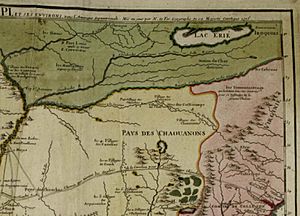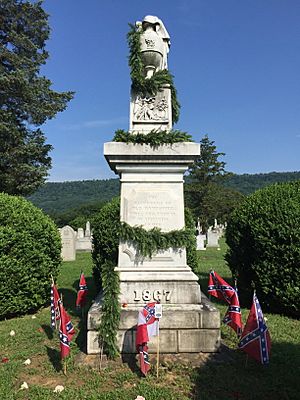History of West Virginia facts for kids
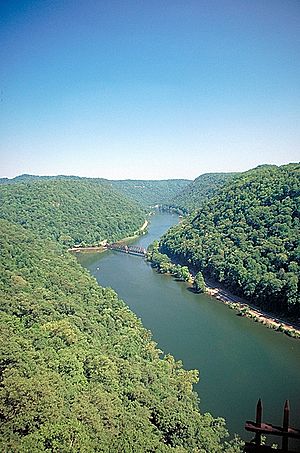
The story of West Virginia began in 1861 during the American Civil War (1861–1865). People in the northwestern part of Virginia held a meeting called the Wheeling Convention. They wanted to cancel Virginia's decision to leave the United States. West Virginia became one of only two states created during the Civil War. It was the only state to split from another state at that time. West Virginia officially joined the U.S. on June 20, 1863.
Before this, the land that is now West Virginia was part of the British Virginia Colony. Later, it was the western part of the state of Virginia. Western Virginia had very different ideas about leaving the Union. This led to its separation from Virginia. West Virginia was also one of five "border states" during the Civil War.
In the late 1800s and early 1900s, West Virginia's population grew a lot. This was because of many jobs in the coal and logging industries. Since the mid-1900s, fewer people have lived in West Virginia. Many have moved away for better job chances. West Virginia's history is shaped by its mountains, beautiful river valleys, and rich natural resources. These things have always driven its economy and attracted visitors. West Virginia is known as the "Mountain State" because it's mostly covered by the Appalachian Mountains.
Contents
Ancient Times in West Virginia
Long before Europeans arrived, the area of West Virginia was a favorite hunting ground for many Native American groups. You can still see ancient earthen mounds built by different "mound builder" cultures. These are found especially in places like Moundsville and South Charleston. Tools and items found there show that these groups lived in villages. They also traded with other tribes. They even worked with copper a little bit. By 2009, over 12,500 ancient sites had been found in West Virginia.
The earliest people, called Paleo-Indians, lived here around 10,500 BC. They traveled along the big river valleys. Later, different groups lived here during the Archaic and Woodland period times.
The Adena people had a big influence in the state. They lived in round houses made of wicker and bark. They grew crops like sunflowers, squash, and different seeds. Later groups, like the Fort Ancient people, lived in larger rectangular houses. They were farmers who grew lots of corn, beans, and squash, including pumpkin. They also raised turkeys and kept dogs as pets.
Many Native American tribes lived in or visited West Virginia for hunting and trading. These included the Shawnee, Cherokee, and Tuscarora. Over time, as settlers arrived, many tribes moved west. Others joined different tribes or blended into the new "Fireside Cabin" culture.
European Explorers and Settlers
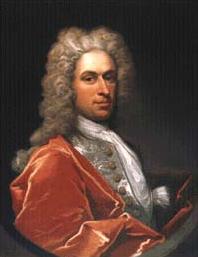
In 1671, General Abraham Wood sent explorers Thomas Batts and Robert Fallum into the West Virginia area. They followed the New River and found Kanawha Falls.
In 1709, some Swiss people asked the King of England for land near Harpers Ferry. They wanted to start a Swiss colony, but it never happened.
Later, in 1716, Lt. Governor Alexander Spotswood led an expedition. The Treaty of Albany in 1722 set the Blue Ridge Mountains as the western border for white settlements. It also said that the Iroquois tribe had rights to the land west of the mountains, including all of West Virginia.
Soon after, white settlers began moving into the Shenandoah Valley. They found it mostly empty, except for some Tuscarora and Shawnee villages. In 1725, John Van Metre, an Indian trader, explored northern West Virginia. The same year, settlers arrived at Pearsall's Flats, which is now Romney. In 1727, a Welshman named Morgan ap Morgan built a cabin near Bunker Hill. German settlers from Pennsylvania also founded New Mecklenburg, now Shepherdstown, on the Potomac River.
In 1734, Orange County, Virginia, was formed. It included all the land west of the Blue Ridge Mountains, which is now West Virginia. However, the Iroquois protested, and in 1744, Virginia bought their land claim for 400 pounds at the Treaty of Lancaster.
A large part of this land was surveyed by George Washington between 1748 and 1751. His diary shows many German settlers were already living along the South Branch of the Potomac. During the French and Indian War (1754–1763), many small settlements were almost destroyed.
After the war, the Royal Proclamation of 1763 said that land beyond the Allegheny Mountains was for Native Americans. But in 1768, the Iroquois gave up their claims south of the Ohio River to Britain. Most of the Cherokee land in West Virginia was sold to Virginia in 1770.
In 1774, Virginia's Governor, John Murray, 4th Earl of Dunmore, led a force against the Shawnee Indians. This was called Lord Dunmore's War. The Shawnee and Mingo tribes then gave up their rights to West Virginia and Kentucky. During the American Revolutionary War, settlers in western Virginia supported the American cause.
Early River Travel
By 1739, Thomas Shepherd had built a flour mill in what is now Shepherdstown. In 1748, Virginia allowed a ferry to operate across the Potomac River. In 1761, Robert Harper got a permit for a ferry across the Shenandoah River at Harpers Ferry. These were the first official commercial boats on West Virginia's waterways.
In the late 1600s and early 1700s, people trapped beavers for their fur. Trading posts were set up where the Ohio and Kanawha Rivers meet, at Point Pleasant, West Virginia. Later, St. Albans, West Virginia, also became a trade center.
As beavers became scarce, people started shipping other natural resources. Salt from Kanawha, then coal and timber, were moved on the rivers. Many riverside places became early industrial sites. Keelboats were built in the Kanawha region. In the 1800s, steamboats were built and fixed in towns like Wheeling and Parkersburg. Wooden coal barges were built on the Monongahela and Coal Rivers.
The logging industry also used the rivers. Special horse-drawn trams helped move timber. By the 1880s, these trams and steam machines were used to collect wood for railroad ties. Railroads were built all over West Virginia, connecting mines to riverboats and coal loading areas.
Western Virginia, 1776–1861
Life in western Virginia was very different from the eastern part. The people were not all the same. Many immigrants came from Pennsylvania, including Germans and Scots-Irish. The rough land made slavery less profitable. Over time, the differences between the two parts of Virginia grew.
In 1829, a meeting was held to write a new constitution for Virginia. The western counties protested because it required people to own property to vote. It also gave more power to slave-holding counties. As a result, almost all western counties voted against the new constitution. But eastern votes passed it anyway.
Even though the 1850 constitution allowed all white men to vote, the way representatives were chosen still gave control to eastern Virginia. Another problem for the West was that the state spent a lot of money on improvements in the East, but very little in the West.
The western areas traded more with their neighbors to the west. Many people felt that the eastern areas had too much power in the Virginia government. They thought the eastern leaders didn't care about their needs. These problems caused tension before the Civil War.
John Brown at Harpers Ferry, 1859
John Brown (1800–1859) was an abolitionist who believed slavery was wrong. He wanted to start a slave revolt. On October 16–17, 1859, he and 18 armed men took hostages and freed some slaves in Harpers Ferry. However, no slaves joined his fight. Local soldiers quickly surrounded Brown and his men in a firehouse. The President sent U.S. Marines, led by Robert E. Lee, who captured Brown. Brown was found guilty of treason against Virginia and was hanged.
Civil War and the Split
In 1861, the United States was deeply divided, leading to the American Civil War. The western parts of Virginia split from the eastern part. They never became one state again. In 1863, the western region joined the Union as a new state. It was first planned to be called "Kanawha," but was finally named West Virginia.
How West Virginia Became a State
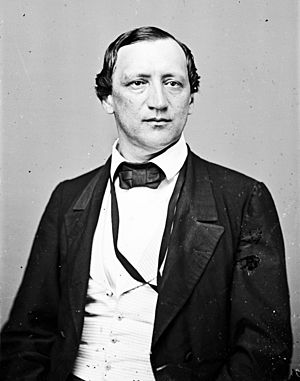
On April 17, 1861, Virginia voted to leave the Union. Out of 49 delegates from what would become West Virginia, 30 voted against leaving. Soon after, a meeting in Clarksburg suggested that each county in northwestern Virginia send delegates to a convention in Wheeling.
The First Wheeling Convention met on May 13, 1861. Some delegates wanted to form a new state right away. Others thought this was too soon. They decided that if Virginia's secession was approved, another convention would meet in Wheeling in June.
On May 23, 1861, Virginia voted to leave the Union. But in the western counties that would form West Virginia, most people voted against leaving.
The Second Wheeling Convention met on June 11, 1861. They declared that Virginia's secession was illegal. They said the pro-secession government in Richmond was not valid. They called for a new state government. On June 19, 1861, they passed a law to reorganize the government. The next day, Francis H. Pierpont was chosen as governor of the "Restored Government of Virginia". This new government claimed to represent all of Virginia.
Even before the Civil War, people in northwest Virginia wanted their own state. But the U.S. Constitution said a new state couldn't be made from an existing one without that state's permission. The "Restored Government" said it had the authority to give this permission. It allowed the creation of the state of Kanawha, which was later renamed West Virginia.
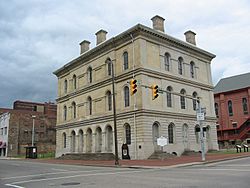
On October 24, 1861, people voted on forming a new state. 18,408 votes were for the new state, and only 781 were against. However, many people who supported the Confederacy did not vote. In some areas, Union soldiers were present during voting.
A new constitution for West Virginia was written between November 1861 and February 1862. It was approved on April 11, 1862.
On May 13, 1862, the new state government approved forming the new state. They asked Congress to let West Virginia join the Union. On December 31, 1862, President Lincoln agreed. But he said West Virginia had to add a rule to its constitution to slowly end slavery. The convention met again and agreed. On April 20, 1863, President Lincoln announced that West Virginia would become a state on June 20, 1863.
Legality of the New State
The new state was considered legal because the Unionist government of Virginia approved the split. Later, Virginia tried to get Berkeley and Jefferson counties back. These counties had voted to join West Virginia in 1863. But the Supreme Court of the United States decided in favor of West Virginia in 1871.
West Virginia During the Civil War
West Virginia did not suffer as much as other states during the Civil War. Union forces took control of most of the area in the summer of 1861. After Confederate General Robert E. Lee's defeat at Cheat Mountain, Union control was strong.
Estimates show that about 22,000 to 25,000 soldiers from West Virginia fought for the Union. A similar number fought for the Confederacy. Many people who supported the Confederacy were arrested by Union authorities. Soldiers were also at voting places to discourage secessionists.
Slavery was a big issue. In 1861, some wanted to end slavery in the new state. A compromise was reached. It said that slaves would slowly be freed based on their age after July 4, 1863. West Virginia officially ended slavery on February 3, 1865. Slavery was abolished nationwide when the 13th Amendment was ratified in December 1865.
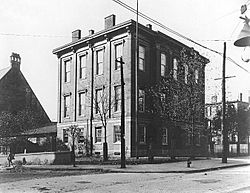
After the war, feelings were strong between Union and Confederate supporters. In 1866, a rule was passed that took away voting rights from anyone who had helped the Confederacy. But this rule was later removed. In 1872, a completely new state constitution was adopted.
Lasting Disputes
After the Civil War, Virginia and West Virginia argued about how to share Virginia's old debt. This debt was mostly from building canals, roads, and railroads before the war. West Virginia's first constitution said it would pay some of the debt. But talks failed. In 1871, Virginia decided West Virginia owed it a certain amount. The issue was finally settled in 1915 by the Supreme Court of the United States. West Virginia paid its last installment in 1939.
There were also arguments about the exact border between Loudoun County, Virginia and Jefferson County, West Virginia. These disputes continued into the 1900s.
Recently, some people in the Eastern Panhandle have talked about rejoining Virginia. They feel that the government in Charleston doesn't pay enough attention to their needs.
Hidden Resources
Salt Mining
Developing its natural resources helped West Virginia grow a lot after the Civil War. Much of the northern part of the state has thick layers of salt underground. Salt mining had been going on since the 1700s. By the Civil War, the red salt from Kanawha County was very important. New technology has shown that West Virginia has enough salt to supply the nation for about 2,000 years! Today, the state produces about 600,000 to 1,000,000 tons of salt each year.
Coal Mining
In the 1850s, geologists explored West Virginia's coal fields. After the Civil War, new railroads made it possible to transport large amounts of coal. This coal went to growing markets in the U.S. and other countries. Many investors, like Charles Pratt, put money into West Virginia's coal industry.
Coal Mine Safety
In the early 1900s, many miners died in coal mine accidents. These accidents were seen as unavoidable. Safety rules were not strictly enforced until the 1960s. West Virginia's mines were so unsafe that immigration officials warned immigrants away. Unskilled immigrants who did work in the mines were more likely to be hurt or killed. When the United States Bureau of Mines gained more power in the 1960s, mine safety improved. West Virginia coal mines became much safer.
Early Railroads and Shipping
The Chesapeake and Ohio Railway (C&O) was completed across the state in 1872. It connected Richmond, Virginia to Huntington on the Ohio River. This opened up the New River Coalfield. Within 10 years, the C&O built tracks to Newport News, Virginia, where it had a huge coal pier. Ships called colliers were built there to carry coal to other ports.
In 1881, the Norfolk and Western (N&W) railroad also expanded into West Virginia. They found a rich bituminous coal seam, which was named "Pocahontas." The N&W also built new coal piers at Lambert's Point near Norfolk. In 1889, Bluefield, West Virginia was founded. It became an important coal center.
The Baltimore and Ohio Railroad (B&O) and other lines also expanded to transport coal. They built coal piers in Baltimore and on the Great Lakes. Another important railroad was the Virginian Railway (VGN), completed in 1909.
New Railroad Opens "Billion Dollar Coalfield"
By 1900, a large, rugged area of southern West Virginia was still far from railroads. This area, called the Winding Gulf Coalfield, was later known as the "Billion Dollar Coalfield."
William N. Page (1854–1932), a civil engineer and mining manager, knew this land well. In 1898, he worked with investors to buy land in this area. Page started the Deepwater Railway, a short railroad to connect to the C&O and N&W lines.
The leaders of the C&O and N&W railroads didn't like this competition. They refused to work with Page or buy his railroad. But Page had a secret partner: millionaire Henry Huttleston Rogers. Rogers was a very powerful businessman.
Instead of giving up, Page and Rogers secretly planned a new, third major railroad. It would go all the way to new coal piers at Sewell's Point in Hampton Roads, Virginia. This was 440 miles away! They bought the land quietly before the big railroads realized what was happening. The C&O and N&W tried to stop them with legal actions and even fights, but they failed.
With Page as its first president, and mostly paid for by Rogers, the two railroads merged in 1907 to form the Virginian Railway (VGN). Building it cost $40 million by the time it was finished in 1909. It was very well-built and efficient. It became known as the "Richest Little Railroad in the World."
Soon, all three railroads were shipping more and more coal from Hampton Roads. Today, the VGN and N&W tracks are part of the modern Norfolk Southern system. In the early 1900s, West Virginia coal was also in high demand at Great Lakes ports.
Workers and the Environment
As coal mining became a major job in West Virginia, there were many conflicts between workers and mine owners. This was about working conditions, safety, and pay. Even today, mining safety and environmental concerns are important issues. West Virginia's coal still powers many electric plants in other states.
20th Century
Wildlife and Tourism
As industries grew, people in West Virginia saw a need to protect wildlife. The Wildlife and Fish Commission was created in 1921. They started the French Creek Game Farm in 1923. This farm raised different animals and birds for conservation. It became a popular place for families to visit. Today, it's the West Virginia State Wildlife Center.
In 1955, a unique yellow-mottled rainbow trout was found at a hatchery. This led to the creation of West Virginia's special Centennial Golden Trout in 1963.
World War II
West Virginia strongly supported World War II. About 67,000 men and 1,000 women from the state joined the military. Unemployment ended as mines, railroads, and factories worked hard to produce supplies for the war. However, John L. Lewis, the head of the United Mine Workers union, often called strikes. This angered many people.
Women volunteers in West Virginia helped during the war. They joined farm programs, helped at United Service Organizations (USO) clubs for soldiers, and collected scrap metal. They also learned first aid for civil defense. Thousands of women helped the war effort, even with challenges like sexism and racism.
School Integration
West Virginia responded well to the 1954 "Brown v. Board of Education" Supreme Court decision. This ruling outlawed segregated schools. Governor William C. Marland promised to integrate the state's schools. West Virginia's school integration was mostly peaceful and quick.
Vietnam War
West Virginia had the 27th highest death rate in the nation during the Vietnam War. 711 of its citizens died in the conflict.
Images for kids


